Published by Jeremy. Last Updated on February 16, 2023.
Disclaimers: Our site uses demographic data, email opt-ins, display advertising, and affiliate links. Please check out our Terms and Conditions for more information. Listed prices and attraction details may have changed since our visit and initial publication.
For the longest time, Angie had mountain gorilla trekking in Uganda on her bucket list, and in early 2019 we finally made that dream a reality with our trip to Bwindi Impenetrable National Park.
When visiting, we really weren’t sure what to expect.
We heard the hike could be easy, moderately challenging, or terrible. We heard the roads are okay and awful. And we have heard mixed feelings on the experience overall as well in terms of whether or not it is worth the $600 per person fee ($700 starting July 2020) to spend an hour with the gorillas.
Not being deterred, we did it anyway and had a fabulous time. To help share some of the information we learned about the experience, this guide was born!
✈️ Book Your Next Trip
- • Planning a trip? Find a flight deal.
- • In need of a room? Check out hotel and apartment prices.
- • Taking a cruise? Find a cruise itinerary for your journey.
- • Don't overlook picking up a rental car or day tours as well!
How Far in Advance to Book Gorilla Trekking?

Prior to visiting Uganda, our thoughts on this were simply that it is best to book as early as possible. But during the trip, we were surprised to find out that you can actually get permits relatively close to your departure date.
We booked four months out and had no issue getting permits; however, based on conversations with our guides we would not recommend waiting to any point closer to departure as dates start filling up completely around the three-month mark. (This, naturally, varies by season as well- we went in the shoulder season at the end of February.)
As Uganda only issues about 100 permits per day, this does present a bit of urgency for those looking to enjoy an activity that will only become more and more popular over the years.
The one caveat for this we have to point out is that there are multiple starting locations for gorilla trekking in Bwindi Impenetrable Forest. Where you get placed is entirely based on when you book.
The highest sought after location is via the Buhoma gate, which has the best road to get into the park. The other entrances have a bit more harrowing journeys that are not for the faint of heart (but we’ll get more on that below).
Our guide told us that for those who look to enter via the Buhoma gate, permits should be purchased upwards of one to two years in advance as these go quickly (mostly due to the fact that the fewest number of families live here relative to the other areas).
Likewise, he also said that private travel agents snatch up many of these permits ahead of time and hope to talk clients into traveling over the dates they have.
Suffice it to say, it’s much easier to just book when you’re ready and take what you can get- bad roads and all.
What About the Fee for Gorilla Trekking in Uganda?
In 2019 the fee to go gorilla trekking in Uganda was $600 per person- a fair increase from neighboring Congo ($400- seemingly only available in full packaged tours in Virunga National Park) but a savings of over 50% from nearby Rwanda ($1500- where our driver said had just as bad if not worse roads). This fee will be rising to $700 in July 2020.
Some 3rd party sources suggest that if you go in the low season the rate may be discounted in Uganda, but we have not verified this. We don’t advise this if you can avoid it as the road quality is pretty bad and would seemingly be more dangerous in the rainy season. Admittedly, it rains fairly often so even in the ‘dry’ season the roads could be pretty bad.
As Uganda is home to almost half of the remaining mountain gorillas between the three countries, it is a great choice and the fee is also the best balance for us- especially since the Congo is sometimes an unsafe place to travel due to civil war or disease outbreaks.
While this fee is high, it is worth keeping in mind two points. First, the majority of the fee goes to the conservation efforts in helping the gorilla population rebound. Second, the higher price point and limited permits keeps the masses away. Two great points in our minds.
Getting in and Out of Bwindi Impenetrable National Park
Now, above we mentioned that driving into Bwindi is a challenge, and during our visit we were able to explore the Rushaga gate of the park.
The drive in here was, well, awful.
Think two-plus hours on a bumpy dirt road high up in the hills with sheer cliffs on one side and imposing dirt walls on the other. One wrong move and we would have had a bad day indeed. (Thankfully it was sunny both days and we did not have to worry about mud, landslides, or other common scenarios like these).
We had to make this journey the day before/after our trekking experience, but those on more budget tours may likely stay outside the park and have to get up exceptionally early (read: 5am) to make the journey to the meeting point for trekking. As such, getting an itinerary where you can stay inside the park and arrive a day early may help your nerves ever-so-slightly.
This is why people prefer to visit the Buhoma section if they can because, while the road there is not perfect, it is the ‘best’ option for most visitors (and, not to mention, is much closer to Queen Elizabeth National Park in the north, where we came from prior).
Suffice it to say, we would not recommend going in the rainy season of spring and fall as the drive-in would not only terrifying but quite dangerous as well.
What Do You Wear While Hiking?
Hiking to see the gorillas in Uganda could be an easy, dry experience or a wet, muddy one. Since you’re in a rainforest, odds are good you’ll be in the latter since so it is best to prepare for this.
During our hike we wore the following:
- Waterproof Hiking Boots
- Thin, Water Resistant Pants
- Sweat Proof / Water Resistant Long-Sleeve Shirt
- A Waterproof Wind/Rain Jacket
- Baseball Hat
Overall, you want your skin to be covered for protection from bugs and thorns, layers to protect from rain, but nothing too heavy as it will likely be somewhat warm unless you are absolutely drenched. We were quite wet when wearing the above chimp trekking and were comfortable, all things considered, and this also worked well on our less-wet-but-still-raining gorilla trekking day.
Long socks are 100% necessary as you’ll need to tuck your pants into them to make sure fire ants do not get on your legs (trust us, its not pleasant- happened to us when we were chimp trekking). Gardening/utility gloves are also recommended as there are some thorns, but we were told this is worse in Rwanda and we ended up not needing ours as thorns were few and far between on our trail.
Likewise, bug spray is an absolute must.
What Camera Lens Should I Take?
Up until moments before we left for our trek, I was deadset on taking my 18-135mm lens for my Sony a6000 (APS-C crop sensor) under the thinking that the gorillas would be close (such that I’d want the wider 18mm end) and I would like the lighter lens for the possibly grueling hike.
I randomly asked some other travelers who trekked the day before what lenses they took, and while most had point and shoots with decent telephoto capabilities, one lady urged me to take my 24-240mm instead. The logic was that, while most of her shots were in the shorter range as the gorillas were close, you can use the longer telephoto to get much closer shots with better detail.
I switched to my 24-240mm at the last second because of this advice, and I’m glad I did. Most of the times the gorillas were close, but sometimes they were also a fair bit off.
For gorillas that were close, I generally shot around 80mm-100mm. For those further away it was 140-160mm. These two conditions were the bulk of my shots. I also have a few instances where I shot at 240mm as well for either close-up face shots or when a mother and baby were far away. Only once did a silverback walk close enough that I shot at 35mm, and we got photos of each other with a gorilla behind us at 24mm, but that was two scenes out of several dozen (although I’m glad I had the wider ends for those!).
I’ve since heard from others who wished they took a larger zoom lens as if the gorillas are on the move when you visit, they’ll be further away as well. Since we only did this trek once I can’t say what the average telephoto range is.
Your mileage may vary with this one, but I would definitely opt for a larger zoom lens than a shorter in this case assuming you have some wider capabilities as well. (Likewise, note that telephoto ranges are for an APS-C crop sensor. If you have a full-frame SLR you should convert by the crop factor for equivalent ranges.)
The Trek Ranges from a Few Minutes to Many Hours
Now, this is the tricky part. How long does it take to actually reach the gorillas when you’re there?
This is a hard one to talk about as wild animals move, and mountain gorillas can cover a fair distance in a relatively short period of time. Some are often seen minutes from leaving the trail. Others take a couple of hours. A few take all day (we’ve heard up to four hours each way being a max for some groups).
Each day trackers head into the park at about 6am to find the families and then report back to the rangers and guides that accompany you on where to find them. (They also stay later in the day to monitor movements as well.)
Before departing you’ll be placed in a group for a designated family (about 8 people per group on average) and by this point the rangers have a generally good idea on which ones are closer and which are further away. While the rangers will not ask you about your trekking preferences, this is where having a good guide from your Uganda safari company will come in to play as some are quite good friends with the rangers (like ours was).
The night before trekking our guide asked us how strenuous of a trek we would be up for, and since we were traveling with friends who are not as strong of hikers as we are we opted for a “middle of the road” hike.
We wanted a bit of a challenge to see them, but did not want to be hiking for nine hours either.
In the end we got to check out the Bwezi group and reached our first gorilla in 50 minutes of relatively easy (but muddy) hiking. He ran off and joined the family which took us another 30 minutes of bushwacking (read: more intense hiking without our walking sticks) to find. From there we got to spend exactly one hour with the gorgeous creatures. After that, it was just over a 60-minute hike back which was absolutely perfect for us.
That being said, we had one of the shortest hikes of the day. In this particular case your mileage will vary.
Are You Guaranteed to See Gorillas?
No, but our guide said its about 99% that do.
The only people who are guaranteed to not see gorillas are those who turn around halfway through the hike and give up. Barring extreme circumstances, virtually everyone who makes the effort will end up seeing gorillas during the trip.
As with all things, we cannot guarantee this and are only passing along what we learned from our guide.
Do You Need a Porter?
Porters are available at the start of the hike and can do everything from carrying your bag to helping you cross streams, mud puddles, climb a steep hillside, or jump over a log.
In 2019 the minimum tipping price was $15 US, but you are recommended to pay more if they helped you significantly.
As every trail is different and you are quite literally hacking your way through the jungle at times to find the gorillas, we recommend everyone have at least one porter per couple.
We had two between our group of four, and while our hike was relatively easy to the point that Angie and I did not need assistance (we relied on the supplied walking sticks just fine- be sure to get one), our friends did. So our porter experience was simply them carrying our bags of food and water (four bottles for the two of us was recommended, but we barely drank one).
That being said, another couple on our trek hired two porters each, and used them extensively in order to get up and down the hillsides.
As all this varies based on the actual experiences of the day and your hiking abilities, it is hard to say what you would need. But definitely at least get one porter to join you even if you are the most confident hiker in the world.
What About When it Rains?
Enjoy hiking in the rain and mud! Sorry, the show must go on.
Actually, it rained during our trek and we still had a great experience. I feel like the gorillas do not move around as much in the rain, so when we found the family we were able to enjoy the hour without them running up and down the hillside as much as others have experienced.
In fact, aside from general concerns of hiking in the mud (which is not fun), the only thing I learned from this experience is that my camera does not love the rain.
For those who have mirrorless or SLR cameras, odds are good you may have a UV lens protector screwed on to the front of your lens. When this gets wet (or more specifically, water on the inside), the humidity will cause the cover to fog and will ruin a bunch of images.
Take this lens cover off and you’ll be just fine (which is exactly what I did). It is a risk to your camera not having the extra protective screen on top of the lens, but during the rain it was the only way I found I could get good photos.
Is Mountain Gorilla Trekking in Uganda Worth It?
Yes. 100% yes. It is one of the most expensive things we’ve ever done but also one of the most rewarding.
Some would say that the chimpanzee trekking in Kibale is overall a better experience (and at a better price), and this may indeed be true. But there is something about seeing these gorgeous gorillas in the wild, knowing that our visit is also helping with the conservation effort, that will have us remembering this one for the rest of our lives.
Expensive? Yes. Hard? You bet. But none of the best things in life ever come easy.
Have a question about gorilla trekking in Uganda? Comment below and let us know to add to this guide!
Thinking of taking a safari in Africa? Check out Churchill Safaris who we used for our own private tour of Uganda. Or, if you’re looking to head out with a group to save a bit of cash, check out G Adventures! And since this is an adventure activity, do not forget to pick up travel insurance before you depart as well!
For frequently asked questions about gorilla trekking in Uganda, check out the following.
Is gorilla trekking in Uganda difficult?
It can be. Trails in Bwindi are minimal at best, and when you get close to gorillas you’ll blaze paths off trail with your guides. Treks can be from minutes to 4-hours+ each way to find a family.
Are you guaranteed to see gorillas?
No. But thankfully most visitors do see a family when visiting. Our guide quoted a figure of 99% success.
How far in advance should you book a permit?
Permits generally sell out more than three months out with the easier-to-reach trekking spots selling out farther in advance.
How much is a gorilla trekking permit in Uganda?
A one-day permit increased to $700 in July 2020. It is worth it.
About Jeremy
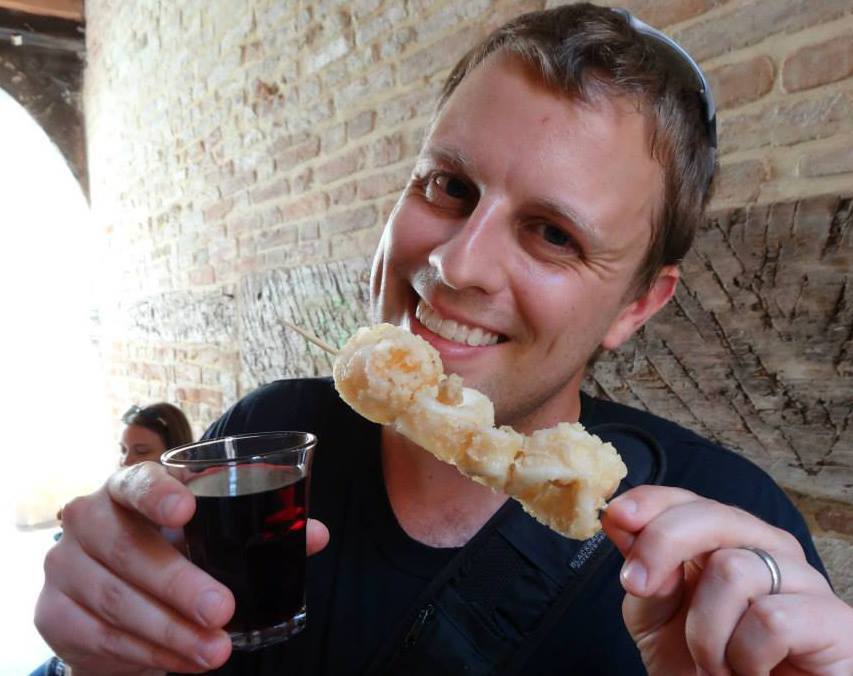
About the Author: Jeremy is a full-time travel writer based in Pittsburgh and primary author of this site. He has been to 70+ countries on five continents and seeks out new food, adventure activities, and off-the-beaten-path experiences wherever he travels.

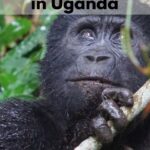


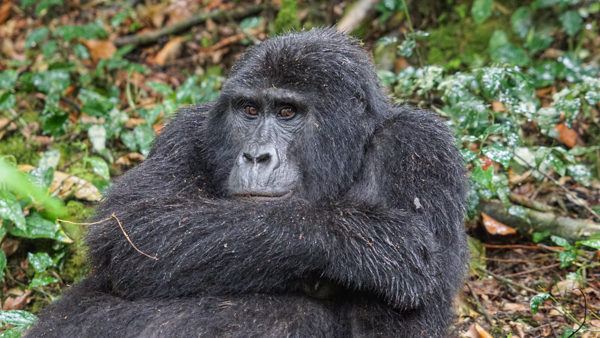
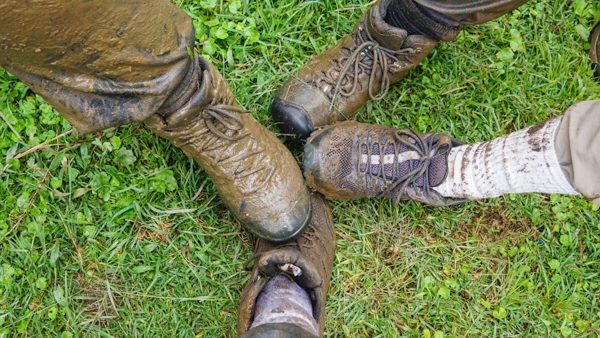
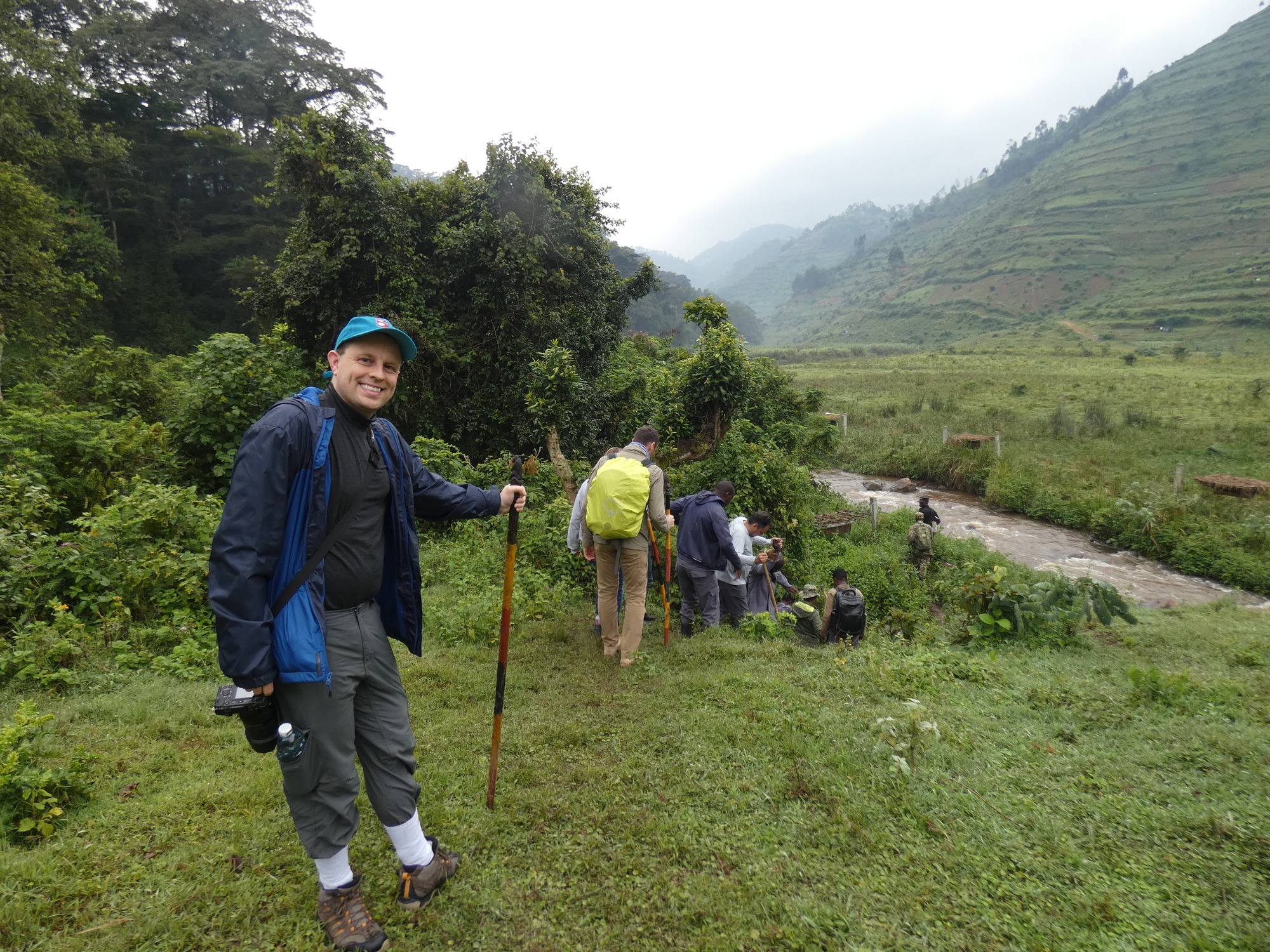
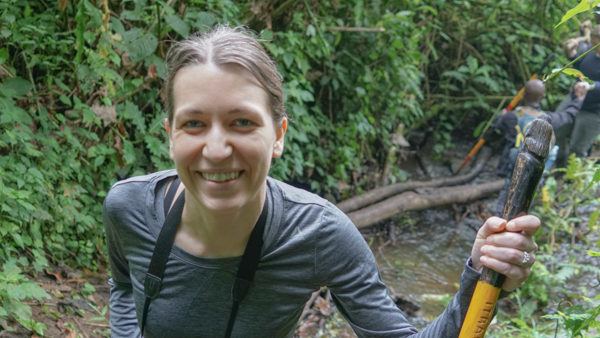





Hey Jeremy thanks a lot for sharing this great information, what an amazing experience. In case you would love to trek gorillas in Uganda, this is the best information to read. However, Jeremy i would love to inform you that effective 1st July 2020, gorilla trekking permits will increase in price from $ 600 to $ 700. But all in all this remains low than the neighboring Rwanda that sells permits at $ 1500. Thanks a lot and please inform all planning travelers of the new price.
Hi !!!
I will be in Egypt in October and would love to leave from there and go to Uganda to do the gorilla trekking. I would be travelling alone and have no idea where to even start.
How long would i need to be in Uganda for and where would i stay to reserve the tour staright from there as i have no idea how it would be for me travelling alone ?
Thanks, any info would be awesome !!!
Christa
Hi Christa, your best bet is to look into tour companies to reserve the trekking ahead of time. Permits for gorilla trekking sell out months in advance, so reserving now is going to be your best choice for being able to do it in October. Then you’ll be able to lump in transportation and accommodations pretty easily from there.
Hi! Thanks for all the details, its really helpful.
I have a question regarding transportation: We are planning a trip in early October. If I prefer to stay i dependent and not go through a tourists company, and I cant rent a car (too expensive), how can I get to the meeting point, or into the park? Can I get someone to take us from a nearby village?
Or is it only possible to book the gorrila trek through a tourist company?
Thanks a lot!
Ofer
I can’t say for sure since we booked it all via a private company, but I would recommend reaching out to those companies all the same because you likely need to purchase your permit sufficiently far in advance anyway. You could likely arrange a trip starting from a nearby village, but would still have to have it reserved weeks/months in advance.
Hello! Thanks for posting this for the world to revel in your memories. My husband and I are going to Africa in ONE month and we had planned to go to Uganda for the Gorilla Trekking, however, one of the tour companies stated it may be dangerous to go after the kidnapping of a California woman in early April 2019. But there are other tour groups I have spoken to that said security is on even more alert so it is still safe to proceed.
As a person who has been there, did you feel safe or had any incidences? I believe anywhere around the world is a risk so is this any different? Would you go again? How do I ensure our safety and do you recommend any specific tour company that would allow us to travel safely for gorilla trekking? Much appreciated!
We did not feel unsafe at all while in Uganda. In fact, I would be more concerned about driving on the roads to get to the gorilla trekking spots than I would be about kidnappings or the like (the roads are not great). We went with Churchill Safaris who were excellent, but I’m not sure that any one company would be more safe than any other in this context. I would most certainly go again.
Thanks for posting Jeremy. Love the breadth and quality of information you guys include in your articles.
Definitely got me thinking about doing something like this in the future.
Enjoy your adventure!
Cheers,
Ray
Hi Jeremy and Angie!
Reading about your adventures in Uganda brought back fond memories of my own. Four years ago, I too, visited the Bwezi family of gorillas. It took 90 minutes of hard trekking before we encountered them. ? While that was an incredible experience, visiting the chimps at Kibale was the highlight if my trip. They’re just so animated! I would have loved to observe them for days.
Thanks so much for sharing. Wishing you and Angie many more awesome adventures.
Thank you! That is awesome to hear you went as well. Its funny but even a week later we don’t even think of the trekking part as much anymore relative to how cool it was to see the chimps and gorillas!